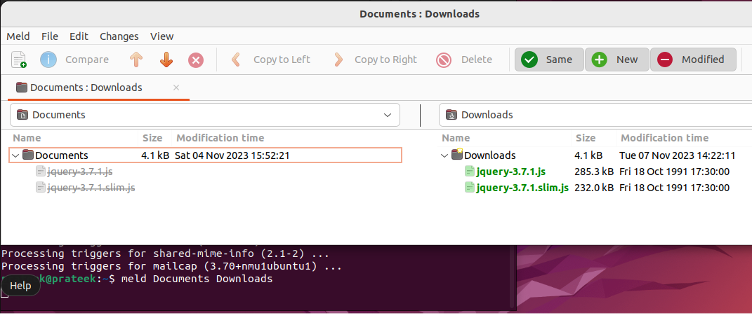How to Find the Difference between Directories in Linux
You can also compare the different versions of directories to know the difference between them and what newer content is added during an update. With the comparison results, you can prepare the patches that further help to update the files on other systems. So, if you also want to learn the different methods to find the difference between directories, keep reading this guide. Here, we’ll explain how to find the difference between directories in Linux with the help of different examples.
How to Find the Difference between Directories in Linux
Let’s divide this section into multiple sections to discuss the various approaches to diff the directories in Linux.
1. The Diff Command
“Diff” is the command that you can use to compare two files or directories. It comes in-built into UNIX and Linux systems, so you can use it immediately in the terminal. For example, let’s compare the “Documents” and the “Downloads” directories using the “diff” command:

In the provided command, “q” stands for brief and “r” stands for recursive output.
2. The Meld Utility
If you prefer having a graphical user interface to have better insights while comparing the directories, meld can be your go-to tool. It is a command-line tool that you can use to differentiate and combine the directories. You can install the “meld” utility by running the following command:

After installation, let’s use “meld” to find the difference between two directories.

Conclusion
Comparing the directories in Linux is essential, especially when you want to maintain the data synchronization between servers. However, the comparison result also helps you understand if any error occurs during data transfer. Furthermore, we listed the practical methods that one can use to find the difference between two or more directories. Although the commands of all these methods seem similar, each one provides results that are tailored to serve different needs.
Source: linuxhint.com
